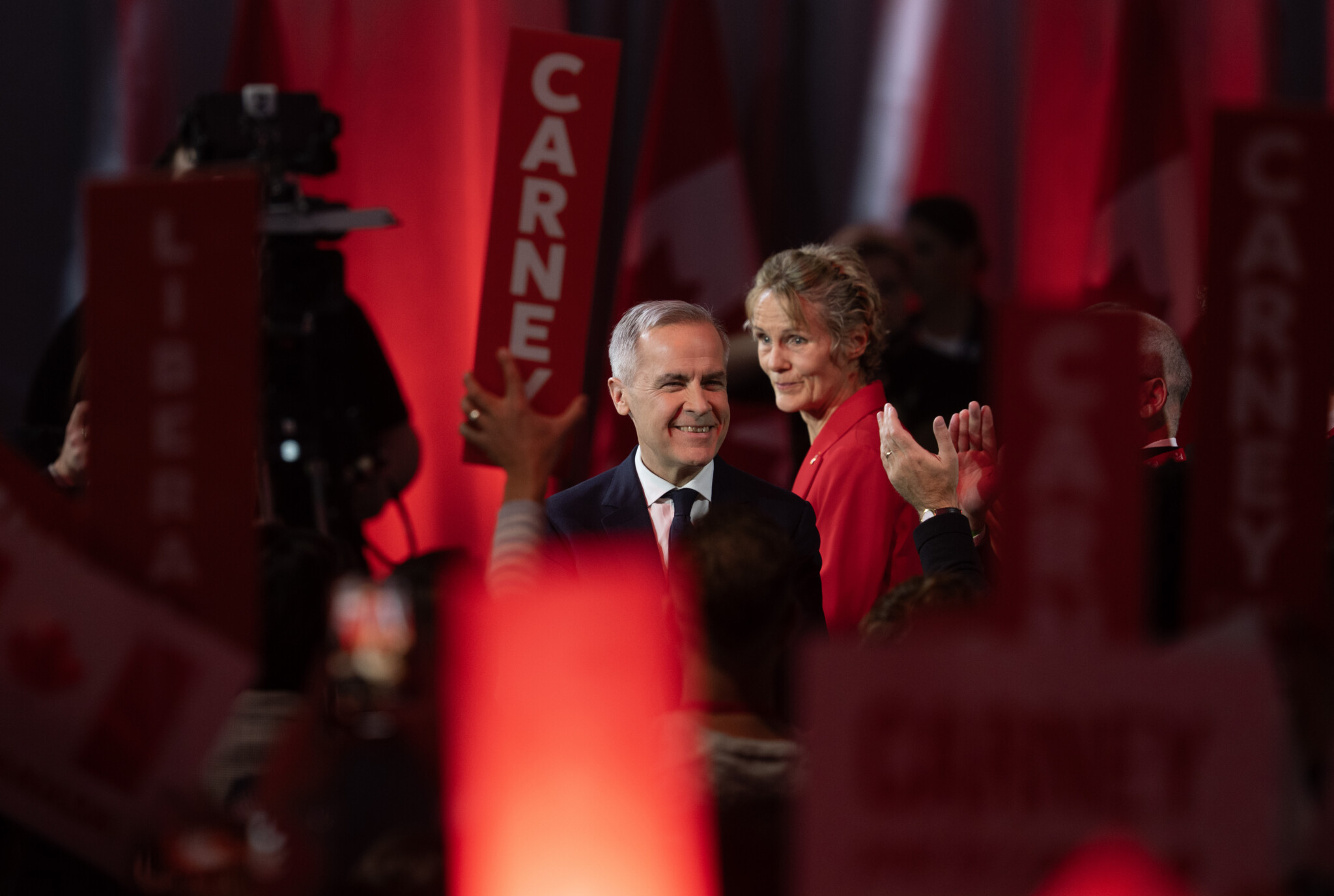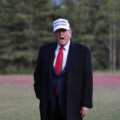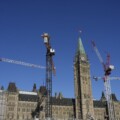This is the last edition of The Week in Polling, your Saturday dose of interesting numbers from top pollsters in Canada and around the world, curated by The Hub.
Here’s what we’re looking at this final week.
The Liberals win the federal election
This week, the Liberals won a minority government, securing 168 seats—just shy of the 172-seat threshold for a majority—and nearly 44 percent of the popular vote. The second-place Conservatives secured 144 seats and about 41 percent of the popular vote—the party’s highest share since Brian Mulroney’s Progressive Conservatives’ 42.9 percent in 1988. The New Democratic Party won seven seats—putting them below the 12 needed for official party status—and just over 6 percent of the popular vote. The Bloc Québécois won just over 6 percent of the popular vote and won 23 seats in Quebec. The Greens won one seat and 1 percent of the popular vote.
The Liberals gained 16 seats this election, and the Conservatives gained 24. In sharp contrast, the NDP collapsed and dropped 17 seats, and the Bloc lost 10 seats in Quebec. The Greens are now confined to their leader Elizabeth May’s seat, losing one seat from their pair.
Voter turnout was more than 68 percent, the highest since the 1993 election, which saw 69.6 percent of eligible voters cast a ballot. Nearly 20 million Canadians voted in the 2025 election. Of all the provinces and territories, Prince Edward Island had the highest voter turnout, with more than 77 percent of eligible Islanders voting. Ontario and Alberta had more than 69 percent of eligible voters cast a ballot. Quebec had just under 67 percent voter turnout. Nunavut came in last at just under 37 percent.
The Liberals benefited from this high voter turnout, as they eked out a narrow win. The Liberals gained 11 points in the popular vote compared to their performance in the 2021 election, which had a turnout of 62 percent. However, Ipsos CEO Darell Bricker described in The Hub that this win is not a Liberal triumph, but a reordering for Canada driven by fracture, not unity. Bricker argued that Carney attempted to turn the election into a referendum on Trump, which worked for the most part, but was not successful enough to hand the Liberals a majority. The reality of this election outcome, in his eyes, is that Canada is very divided, as demonstrated in the split popular vote.
“Urban and rural Canada are now different nations. The East sees Ottawa as a centre of gravity. The West sees it as dead weight. Young Canadians are staring down a future of debt and disillusionment. Older Canadians are clinging to stability that feels increasingly fragile. Our political consensus is cracking,” he contended.
To Bricker, the Liberals didn’t inspire the country or achieve national unity. Rather, they scared just enough voters to beat the Conservatives.
“Carney won the election. But he did not win the country. And if he wants to hold it together, he will need to do more than manage the fallout from Trump. He will need to confront something even harder: the possibility that Canada itself is coming apart,” Bricker wrote.
Many polls come close to the actual election results
After lots of noise about fake polls, many Canadian pollsters came quite close to the actual results of the election in their final poll, as displayed by 338Canada. In all of Canada, the closest pollster to the actual results was Mainstreet Research, which had an average error of about 1 percent. The Writ‘s Éric Grenier wrote that Mainstreet had “one of the lowest errors [he has] encountered in a federal election.” Liaison Strategies and Angus Reid come in at a close second, with an error of 3 percent.
Most pollsters overestimated the NDP, with only Mainstreet, Angus Reid, and EKOS placing the NDP at 6 percent or less. Several other pollsters had the NDP at 7 to 11 percent of the popular vote.
Most pollsters underestimated the Conservatives. Mainstreet and Liaison were the only pollsters that had the Conservatives at 41 percent (which they achieved) and not less.
Interestingly, as Grenier noted, the interactive voice response, or automated telephone polling, method of polling was the most accurate, with an average total error of 5.5 points. Online polls, on the other hand, had an average error of 8.9 points, while mixed-method pollsters had an average error of 8.1 points.
Poilievre and Singh lose their seats
In the Ottawa riding of Carleton, Conservative leader Pierre Poilievre lost his seat to retired businessman Bruce Fanjoy. Fanjoy received 43,900 votes to Poilievre’s 39,585. Just over 81 percent of registered voters in Carleton cast a ballot, making it the riding with the highest voter turnout in all of Ontario.
Poilievre won Carleton in the 2021 election with 50 percent of the vote. This time around, he got 46 percent of the vote, to Fanjoy’s 51 percent.
Poilievre has been the member of Parliament for the riding since 2004, representing Carleton for over 20 years.
The result has sparked questions about whether Poilievre should stay on as the leader of the Conservatives or step down. His abilities to serve as leader are limited without a seat. For instance, he cannot participate in question period.
This Friday, Damien Kurek, the MP for Battle River—Crowfoot, announced that he will resign to allow Poilievre to run in that rural Alberta riding.
Prime Minister Carney said he would call a by-election “as soon as possible.”
NDP leader Jagmeet Singh lost his seat in Burnaby, British Columbia. He came third in a race won by Liberal candidate Wade Chung. Chung got 21,745 votes, beating Conservative candidate James Yan’s 19,838 and Singh’s 9,353.
Singh announced he would step down as NDP leader, as the level of support for the NDP dropped to its lowest since 1993.
“Obviously, I’m disappointed we could not win more seats. But I’m not disappointed in our movement. I’m hopeful for our party, I know we will always choose hope over fear and optimism over despair and unity over hate,” Singh said in his resignation speech.
Conservatives win blue-collar workers, Liberals win white-collar workers, and the NDP loses both
A recent poll by Pollara found that the Conservatives won the blue-collar vote by a wide margin of 19 percent. The Tories accrued 50 percent of the blue-collar vote to the Liberals’ 31 percent. Contrarily, the Liberals won over white-collar workers by 11 percent. They managed to get 46 percent of the vote share compared to the Conservatives’ 35 percent. The consistent theme between white-collar and blue-collar vote preferences is a weak performance for the NDP, which could have once been considered the workers’ party.
The Conservatives cleaned up the working-class vote.
“They did that in a number of ways. One was to really attack the NDP for being inconsistent on labour and pointing out some of the personal qualities of Singh that weren’t really working class,” Lydia Miljan, a University of Windsor political scientist, told the Windsor Star.
Miljan noted that the notion of Singh and the NDP being “Maserati Marxists” is exactly the type of title that gets into people’s minds and impacts their votes. The leader had been seen getting into the Italian luxury car last year.
Working-class areas like Windsor used to be NDP strongholds. Now, all of the Windsor ridings are Conservative.
In Windsor West, Conservative candidate Harbinder Gill beat NDP incumbent Brian Masse, who dropped to third place after representing the riding since 2002.
Liberals largely dominate white-collar, urban areas in cities like Toronto, Vancouver, and Montreal. Toronto—with the notable exception of York Centre, which was claimed by Conservative Roman Baber, who bested incumbent Ya’ara Saks—is red.
All but two ridings on the Island of Montreal went Liberal. Another went to the Bloc and the other to the NDP. The Liberals also conquered much of Metro Vancouver and flipped several former NDP strongholds in the Greater Victoria and Vancouver areas.
Signing off
As the election period winds down, The Week in Polling series does too. I began writing The Week in Polling in June of 2024, when the Conservatives looked to be heavy favourites in the election and had made significant gains in the Toronto Centre by-election. Today, the Liberals are hot off the heels of a fourth election victory. Watching the polling landscape change so much and presenting it to The Hub‘s valued readers has been a wild ride. The Week in Polling was my first dedicated series in The Hub and contributed to several of The Hub‘s most-read pieces of the year. It has been a privilege to have brought our readers The Week in Polling.















